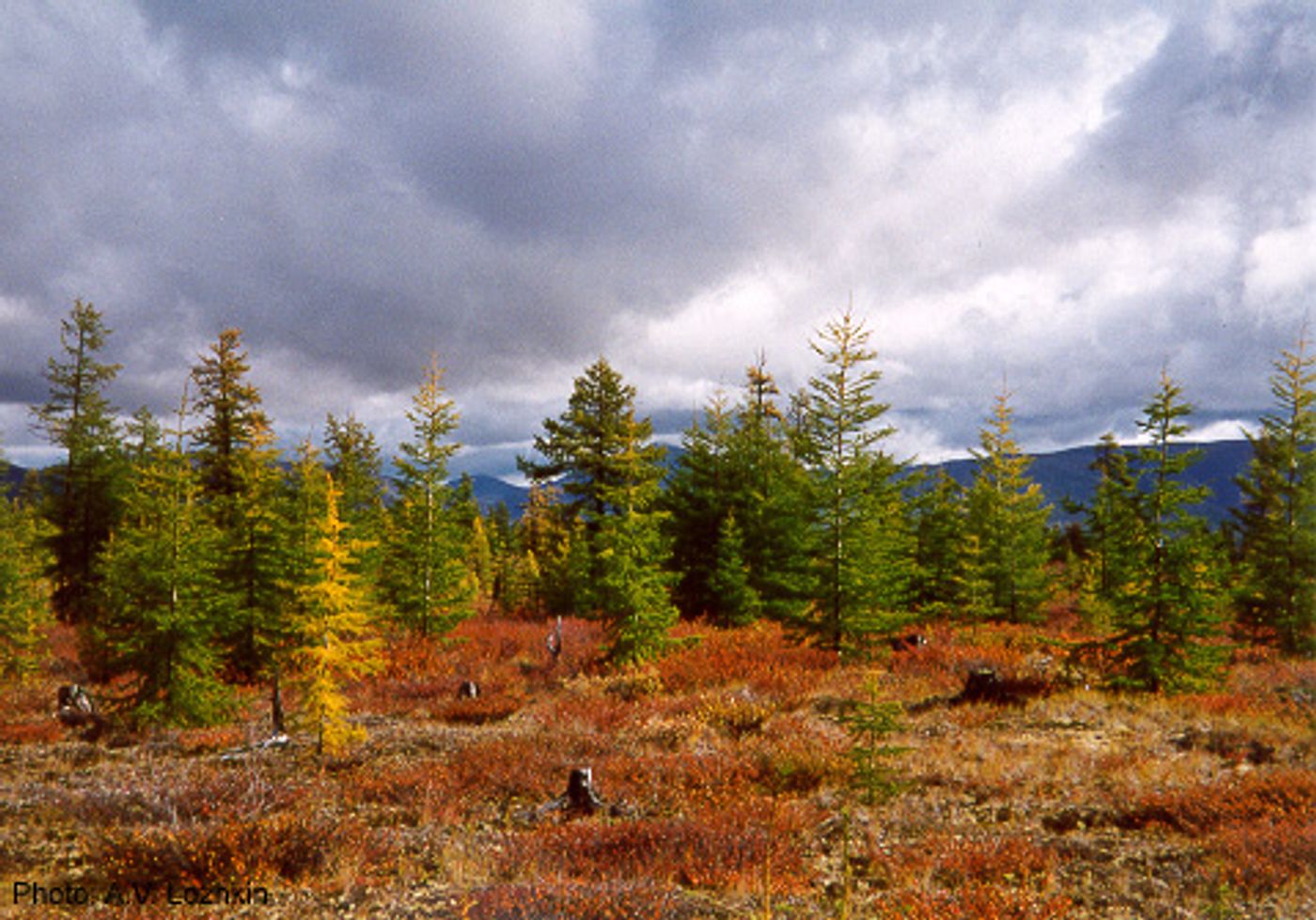The northernmost trees on Earth are growing faster than ever
The Dahurian larch tree, known by its scientific name as Larix gmelinii, is specially adapted to survive the long, cold, dark winters of the permafrost plains in northern Asia. The species makes up the northeastern Asian boreal forests because of its unique ability to withstand such harsh climate. But that begs the question: how is the Dahurian larch faring in the warming world where permafrost plains are on the brink of melting away? New research published in the Journal of Geophysical Research: Biogeosciences suggests that they are doing surprisingly well.
The scientists used dendrochronology, the study of tree rings, to determine that the trees have grown more in the last ten years than they did in the previous forty. According to the research team, rising soil temperatures have allowed for significant growth in larch trees because when the permafrost doesn’t reach as deep, trees can expand their roots and absorb more nutrients. The authors saw this phenomenon particularly in older trees, where trees older than 400 years grew faster in the past 10 years than in the past 300 years.
Erika Wise, an associate professor of geography at the University of North Carolina -- Chapel Hill, was not involved in the new study. She commented that the results from the study, "make a lot of logical sense in terms of why the trees might benefit from the increased winter ground surface temperatures, which is that especially things like an earlier spring thaw could really help trees get growing earlier, more ability to have root activity in the cold months, these sort of things would make sense in why trees would benefit from warmer winters in particular," Wise said.
While these unexpected growth spurts may be a positive consequence of climate change, it’s likely that the benefits will turn sour in the future as permafrost thaws and creates wetter conditions in the forests. Dahurian larch trees are not good at living with wet conditions, so it is likely permafrost thaw could stall or inhibit growth completely.
This study is the first to analyze the impacts of climate change in regards to soil temperatures and temperature-sensitive trees in permafrost forests. The larch can live for more than 400 years in old-growth forests and, "if the larch forest retreat in this region in the future, it is also not a good sign for the whole boreal forest," says leader author Xianliang Zhang, an ecologist at Shenyang Agricultural University in Shenhang, China. The disappearance of the larch would impact the ecosystem on a much grander level.
Sources: Science Daily, Journal of Geophysical Research: Biogeosciences









